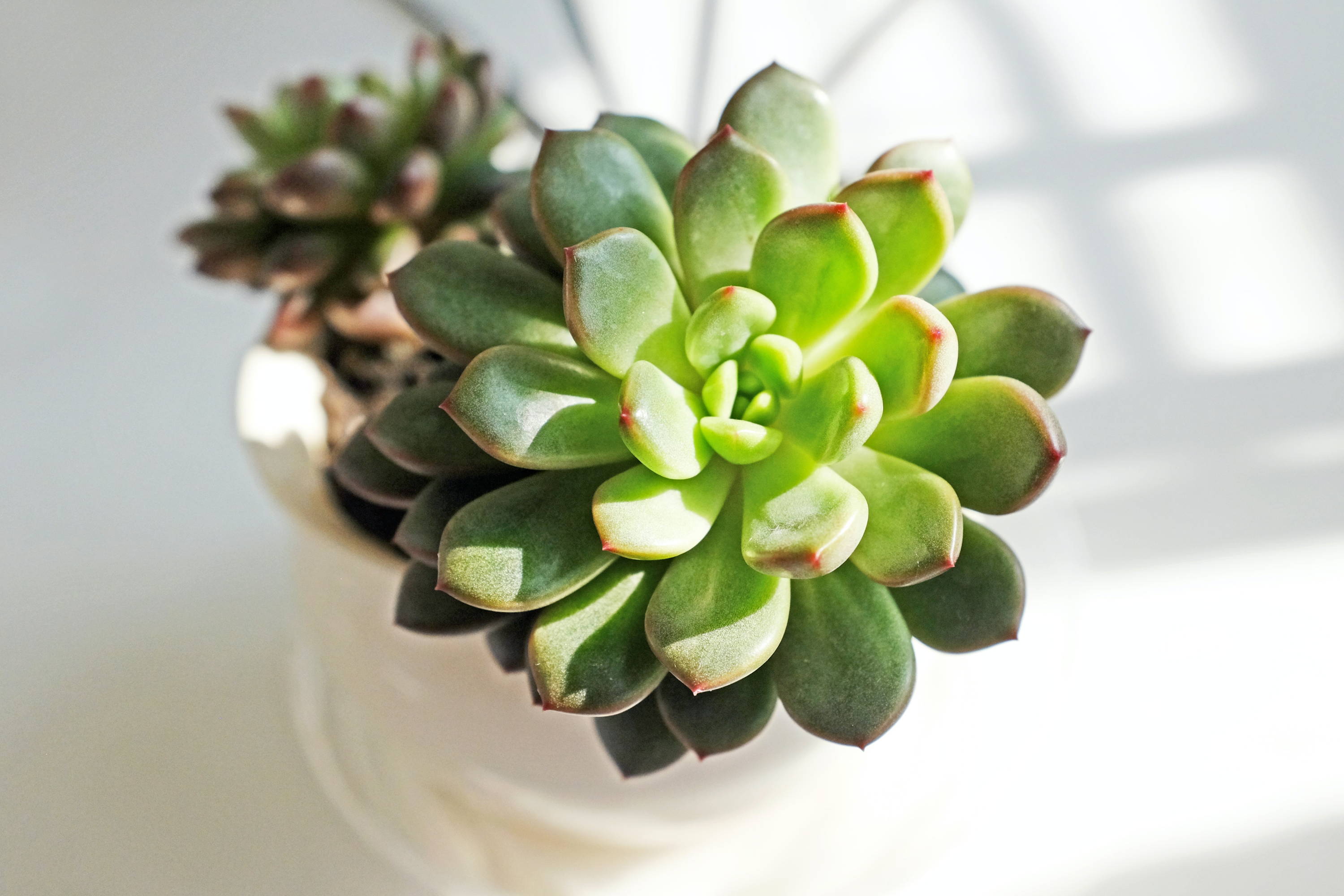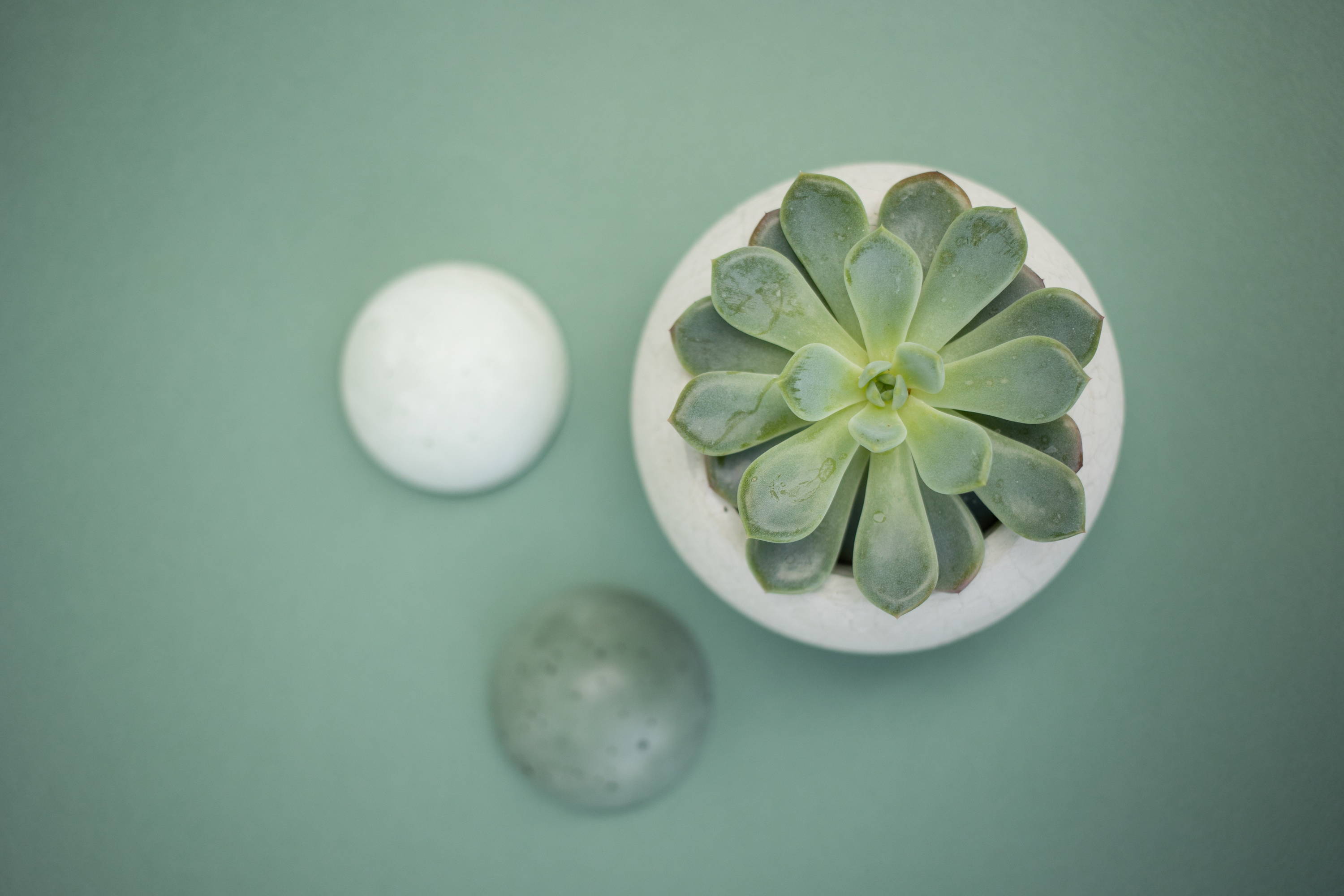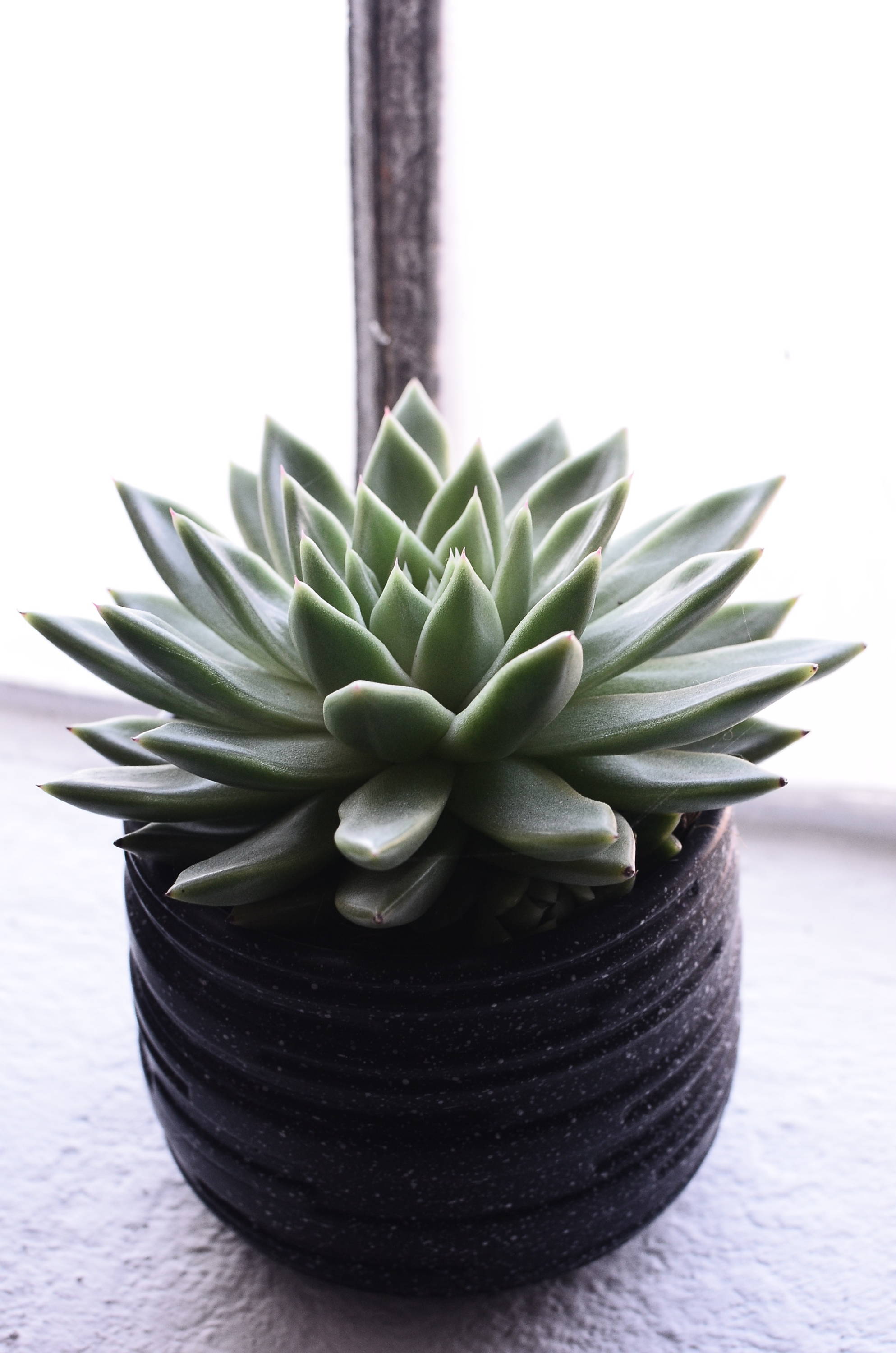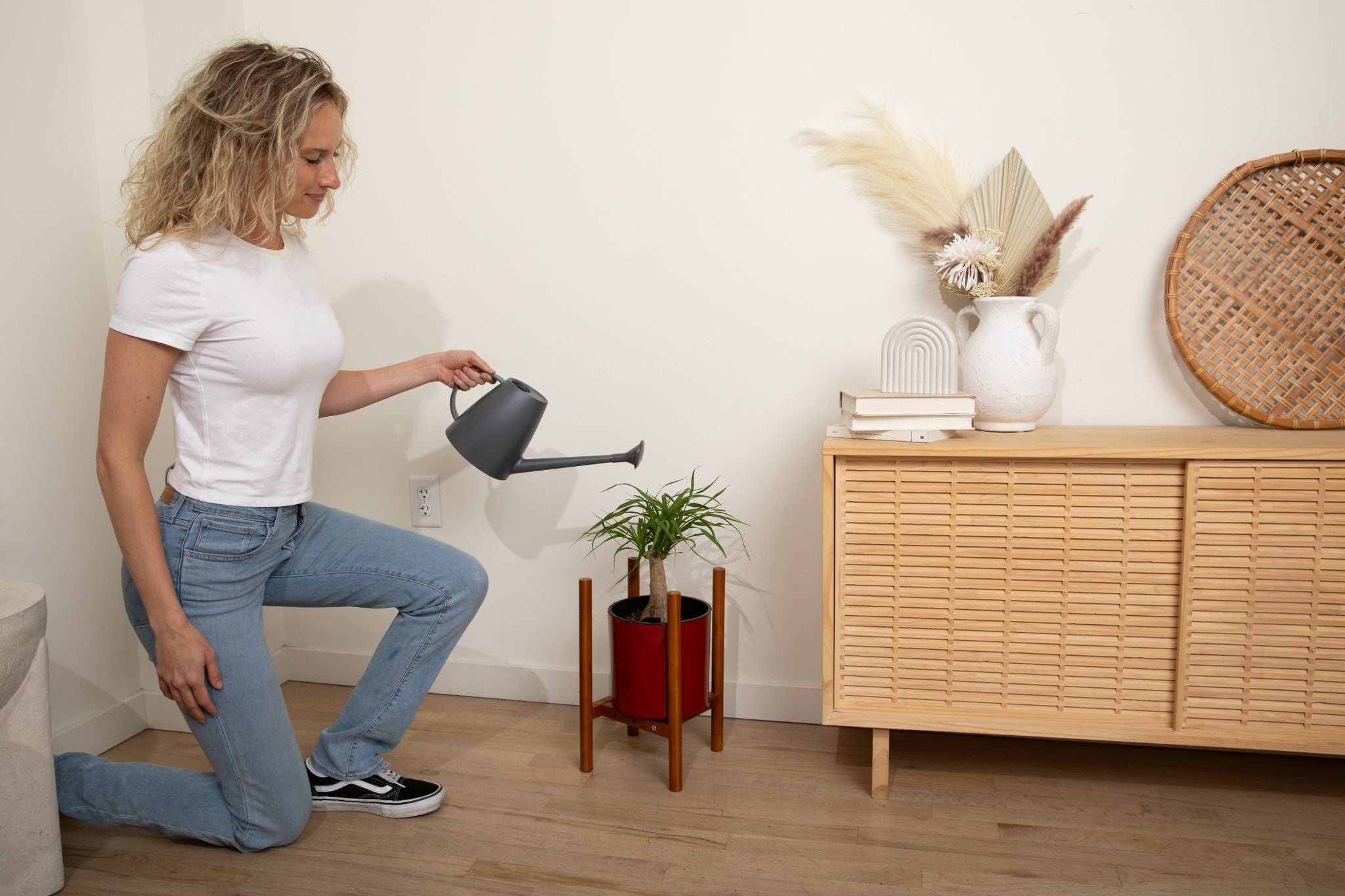How to Care for Echeveria in 8 Easy Steps

Echeveria
We at rePotme love our succulents, they are as beautiful as they are resilient. This particular succulent, the Echeveria, is notable for its reproductive cycle that gives it the nickname "Hens and Chicks." The Echeveria is similar to the Aloe Vera in that the plant is a parent (hen) that has offspring around their base (chicks). Echeveria, like many succulents, hail from the deserts of North America. Both the "Hens" and the "Chicks" form a rosette pattern. The Hens don't get too large before the Chicks replace them, but they live brilliantly for the time that they have each time around.

Echeveria
The Home Needs Renovating
A lavish lifestyle isn't for everyone, and the same goes for the Echeveria. Echeveria like just the right about of space for their roots, and gritty soil that isn't too absorbent. To meet your Echeveria's needs for a cozy home and a hearty meal, we provide our signature rePotme Slot Pots in a range of sizes with many vibrant colors! To fill them, we offer our fresh-mixed-to-order rePotme Echeveria Imperial Succulent Mix made just the way your Echeveria likes it!

Water Weekly
Having hailed from the desert, Echeveria do not need a lot of water in order to survive. Plants of the succulent variety are very well adept at taking in moisture when available and storing it to make it last. They not only survive, but thrive in dry and warm conditions. When their otherwise plump leaves start to wrinkle, then they may need some water. It is important that the humidity doesn't get too high, the water they get is best given in liquid form.
During the Spring and Summer months Echeveria should be watered weekly, but during the Fall and Winter months they should be watered sparingly or on an as-needed basis. When watering, it's best to avoid the leaves and water at or near the base. To help with gentle and consistent watering, we carry watering cans in plastic and stainless steel.
Let the Sunshine In
Echeveria LOVE sunning their leaves. The leaves that make up their rosette shape, much like the leaves on a tree, will fan out and move with the light to maximize their absorption. Gaps between the leaves will form as the plant grows, but when it is small it is important to check that the bottom leaves have enough light exposure. If your Eche is in a position where it is away from natural sunlight, our efficient Radiant Full-Spectrum LED grow light is the next best thing!
If You're Cold, They're Cold.
Despite having their roots in the desert, Echeveria fare very well in the home. Accommodating their temperature needs just takes a bit of intuition; if you're cold, they're cold. Generally, room temperature is adequate for the Eche, but if you have them somewhere where it is well below room temperature that feels cold to you, they can be kept warm with our Sun System HPS grow light.
They Get Hungry, Give Them A Snack
Just like with growing people, succulents get hungry and need to eat regularly (although not as often as we do!) Echeveria rely on fertilization and begin to limit their functions when they get hungry, such as flowering and reproduction. You can feed them with a balanced 2-4-2 fertilizer such as our FEED ME! Cactus and Succulent Food. During warmer seasons they have a faster metabolism and need feeding every 1 to 2 weeks, and during cooler seasons they need feeding every 2 to 4 weeks. You can also feed it with a controlled-release fertilizer at the beginning of the season.
Out With the Old, In With the New
Generally, Echeveria are adept at self-pruning. Usually all you need to do is to pick out any dead leaves that you may see. When repotting an Echeveria plant, it's best to trim and remove any dead roots and leaves so they don’t impede new growth. We recommend our rePotme Precision Clips. It is important that the dead leaves and roots don't stick around to feed the saprobic bugs, molds, and fungi.
Foster Their Pups
Echeveria grow fairly quickly. Soon, you may start to see little offshoots. These new offshoots are commonly called "chicks" or "pups." If you wish to reproduce your Echeveria when pups aren't available, they can also reproduce by cloning (taking a cutting and rooting it in a new pot.) Giving the little ones a good start in life is easy with our rePotme Echeveria Succulent Starter Kit! Our kit's included soil, pots, and food can give the new pups their new home and the right start in their new life! Ideally, new cuttings would be taken in the warmer months. After taking a cutting with a sanitary tool such as our rePotme Precision Clips, allow to sit for a day before replanting. This waiting period is only for plants with plump water-retaining leaves. At cutting, the sap will leak a bit. The right time to repot is around when the leak stops. At this point, the cut end should be gently pushed into moist potting mix, then allowed to dry and watered weekly.
Be Cautious of Bad Actors
Lastly, we must address the unfortunate subject of the nasties one does not wish to find in their plant. An inevitable part of feeding good things to a plant is competing life also wants to eat them. Overwatering can lead to unwanted mold and fungus because these pathogens thrive in high moisture, and also because many species can survive the low-oxygen environments that are created by dampness impeding fresh air exchange. If you see any rot, it's time for damage control. In this situation, gently take the plant out of the pot and allow to dry until moisture returns to normal. After your Echeveria has recovered, it's time to repot the succulent with new soil at the appropriate dryness (or moistness if you prefer to look at the glass as half-full.) Also keep an eye out for large visible pests such as fungus-gnats, spider-mites, and mealybugs. To make pest control convenient and easy, we formulated our cinnamon-based GET OFF ME! Natural Pest Control.

